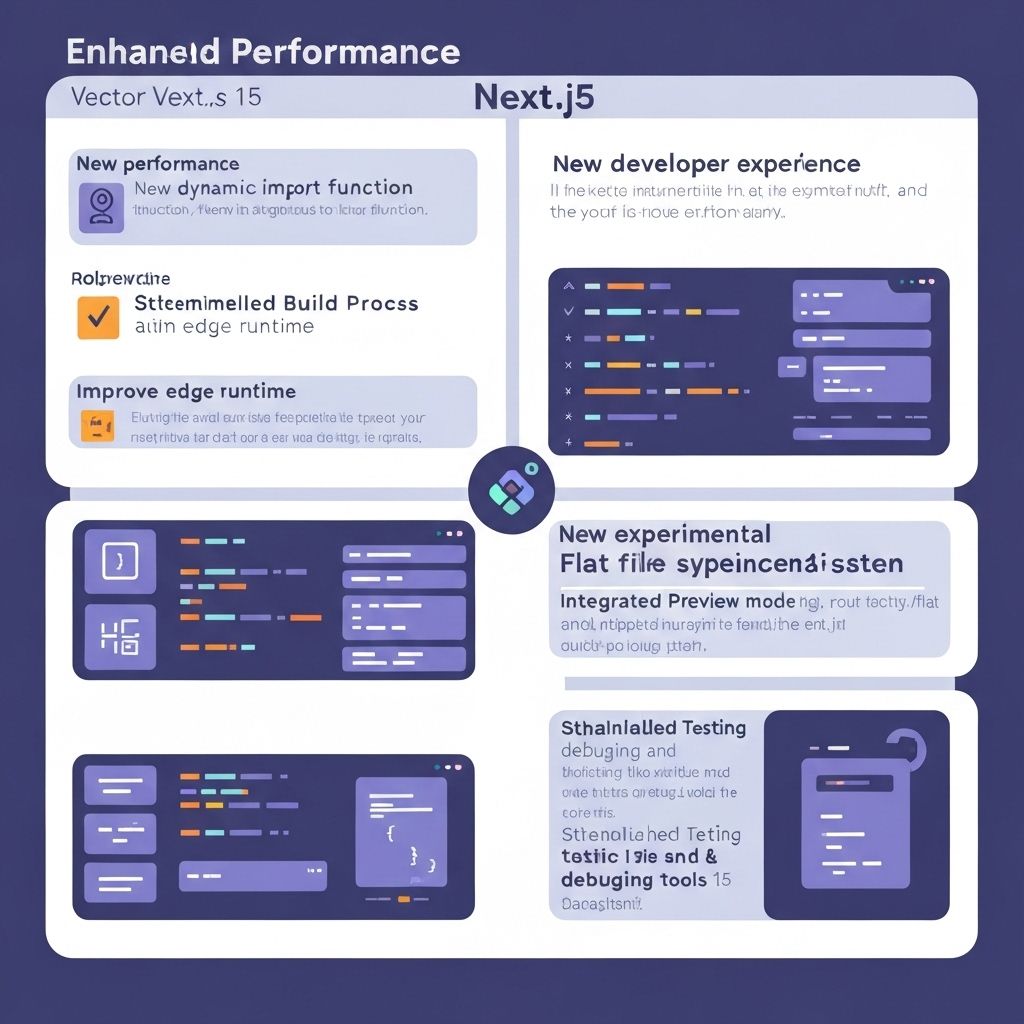
Next.js 15: What's New for AI Applications
Next.js 15: What's New for AI Applications

Next.js 15 introduces several groundbreaking features that make it an even more powerful platform for building AI-powered applications. From enhanced streaming capabilities to improved server components, these updates address many of the challenges developers face when building modern AI interfaces.
Enhanced Streaming and Suspense
Why Streaming Matters for AI
AI applications often need to stream responses as they're generated. Think of a chatbot revealing its answer word-by-word instead of waiting until the end. With Next.js 15, streaming is smoother and integrates tightly with React’s Suspense, which improves both performance and user experience.
Real-world example: A customer support assistant built on GPT can now respond in real time, reducing perceived latency and keeping the conversation natural.
Server Actions with Streaming
Server Actions now support streaming as well, which is ideal for AI workflows where requests may take several seconds to complete. This allows developers to maintain responsive interfaces while long-running AI processes are underway.
Partial Prerendering (PPR)

Partial Prerendering is one of the most exciting new features. It enables you to combine static content (like headers or dashboards) with dynamic sections (like live AI metrics or chat windows).
Why this matters:
AI dashboards often need to load quickly but also update in real time. With PPR, static components render instantly, while dynamic ones stream in as data becomes available — striking the perfect balance between speed and flexibility.
Enhanced Server Components
Server Components in Next.js 15 now come with performance improvements that are particularly useful for AI workloads. Running logic on the server means:
- Sensitive keys (like API tokens) never reach the client.
- Heavy processing (such as data analysis or model calls) is offloaded from the browser.
- Faster load times, since only lightweight UI code is sent to the client.
Use case: An AI analytics dashboard can perform large-scale analysis securely on the server while delivering lightweight results to users.
Smarter Caching for AI

Caching is crucial for AI, where repeated queries or embeddings can be expensive. Next.js 15 introduces improved caching strategies that make it easier to store results temporarily and revalidate them when needed.
- Faster responses: Reuse embeddings or model outputs without recalculating.
- Cost savings: Avoid unnecessary API calls to external AI providers.
- Flexibility: Developers can set cache durations and tag data for revalidation.
Better Developer Experience
Next.js 15 doesn’t just optimize performance — it makes development easier:
- Stronger TypeScript integration ensures fewer runtime errors when working with AI models and APIs.
- Improved error handling makes debugging streaming and server components smoother.
- Optimized package imports help reduce bundle sizes when using AI libraries like LangChain or Pinecone.
This means developers spend less time fixing type issues or performance bugs and more time building features.
Performance Optimizations for AI
AI apps often rely on large third-party libraries. Next.js 15 includes better tree-shaking and bundle optimization, which means only the code you use is shipped to the browser.
Result: Faster initial loads, lighter bundles, and smoother interactions even in AI-heavy apps.
Real-World Application Example
Imagine building an AI assistant dashboard with Next.js 15:
- The header and navigation are prerendered for instant load.
- Metrics stream in as AI models finish analysis.
- Chat interfaces provide word-by-word streaming replies.
- Caching ensures embeddings are reused efficiently.
- Server components keep sensitive API keys hidden and computations secure.
The end result is a seamless, scalable AI experience with minimal latency.
Migration Considerations
If you’re upgrading an existing AI project to Next.js 15, keep in mind:
- Update dependencies: Ensure your AI libraries are compatible.
- Review caching strategies: Take advantage of the new built-in caching.
- Adopt streaming patterns: Replace blocking API calls with streaming Server Actions.
- Test performance: Benchmark response times before and after migration.
Conclusion

Next.js 15 provides significant improvements for AI application development, from better streaming capabilities to enhanced server components. These features enable developers to build more responsive, efficient, and scalable AI-powered web applications.
At The Vinci Labs, we're excited about these improvements and how they enable us to deliver even better AI experiences for our clients. The combination of improved performance, better developer experience, and enhanced streaming capabilities makes Next.js 15 an excellent choice for modern AI applications.